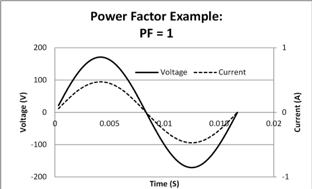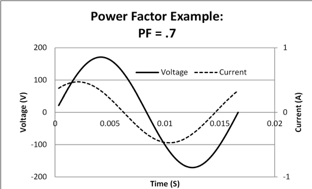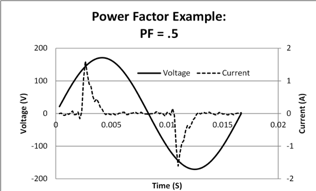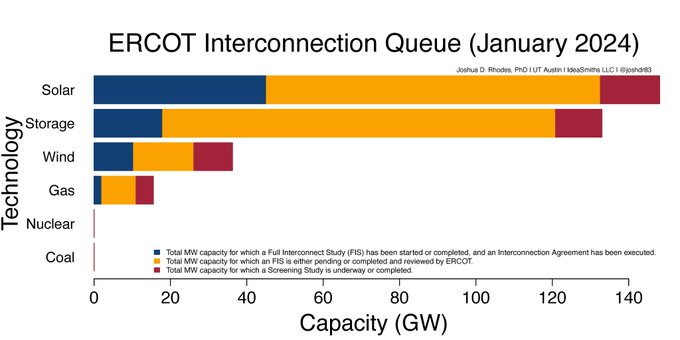October 29, 2018
By Scott Hinson, chief technology officer, Pecan Street
Power factor isn’t the newest super hero TV show. It’s a measurement distribution engineers use to figure out how difficult it is to provide power to whatever we plug in. Every device that pulls electricity from the grid, from a small phone charger to large industrial loads, has a power factor that can be measured.
Why is it important? If too many loads plugged into the grid have a poor power factor, the people operating the grid have a difficult time keeping the grid operating normally. The voltage can be too high or too low, which can cause the lights to flicker or equipment to stop running or even break.
Exactly what is power factor (or PF)? The easiest way to understand it is to see it.
In North America, the alternating current (AC) electricity that powers our lives constantly changes voltage in a 60Hz sine wave.
In the first graph (PF=1), the current (dotted line) is “in phase” with the voltage. For the most part, the lines curve together. That’s a good power factor. Old-school incandescent light bulbs are a good example of a “good power factor” device. These bulbs are inefficient and consume a lot of power, but it’s easy power for the utility to supply.
If the current moves out of phase with the voltage (PF=.7 graph) or gets distorted (PF=.5 graph), the power factor declines. The PF=.5 graph shows the measurement of a real device measured in a real home.
Utility engineers have dealt with power factor issues since the start of the AC grid. By itself, power factor can be fairly easily accommodated in the distribution system. Historically, utility engineers have only had to deal with power factor correction for the PF =.7 example, and that’s relatively easily fixed within the distribution system.
As people have moved to more home appliances with efficient electronics, there has been a shift toward the PF = .5 example. When you add distributed generation such as solar to the mix, the situation becomes more difficult for utilities to provide reliable power….but that’s a topic for a future blog post.
You can download Pecan Street’s white paper on power factor below. Enter your name and email address, and a download link will be mailed to you.





















